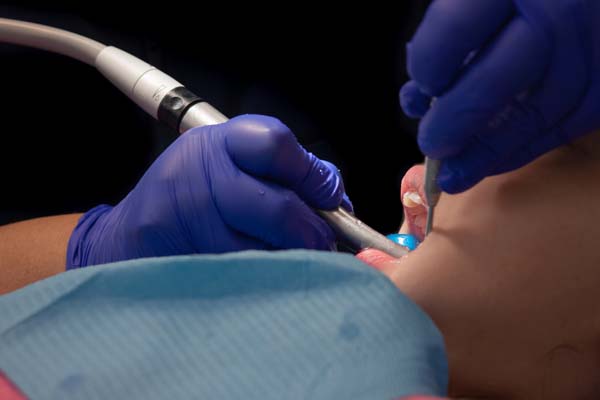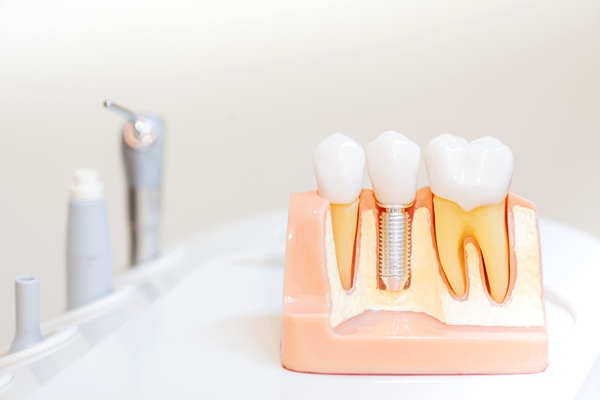What Is Socket Preservation Grafting?

Socket preservation grafting serves an important role in dentistry. After teeth are extracted, dentists often perform a socket preservation graft to prevent issues with the surrounding teeth and jawbone. Understanding what socket preservation grafting is can help you know why your dentist may recommend it.
A complete review of socket preservation grafting
There are different reasons why a socket preservation grafting may be necessary, but in most cases, it fills the cavity or socket that remains after a tooth is extracted. The following is a review of socket preservation grafting, including how it is defined, how the treatment process works, when treatment is necessary, and risks that may be involved with undergoing this procedure.
Socket preservation grafting explained
Socket preservation grafting is designed to fill the cavity that remains once a tooth is extracted. This can prevent the jawbone from deteriorating and the gums from receding. Without a socket preservation graft, surrounding teeth are more likely to shift as a result of the tooth extraction. It is also a necessary procedure for patients who plan to replace the tooth with a dental implant unless the implant is placed soon after the extraction takes place.
How socket preservation grafting works
Socket preservation is performed by a general dentist, oral surgeon, or another dental professional who is trained in grafting procedures. It is typically performed after tooth extraction. During the procedure, the gums are pulled back to access the underlying bone. The dentist then cleans the tooth socket before filling it with a bone substitute material. In some cases, the dentist uses either the patient’s own bone or a donor bone material. After, the graft is covered with a special membrane to protect it and help it regenerate.
When socket preservation grafting is necessary
Socket preservation grafting is not always necessary after tooth extraction, but it is strongly encouraged in most cases to prevent issues such as bone loss, gum recession, a weakened jawbone, and teeth shifting. Also, there must be a healthy existing bone to properly support dental implants, and grafting is likely necessary for implant-supported tooth restorations. Socket preservation grafting is also encouraged if the patient intends to replace the missing tooth (or teeth) with a dental bridge or dentures, as well.
The risks of not preserving the socket
As mentioned, the risks of preserving the socket can include teeth shifting, which makes tooth replacement more challenging, along with creating orthodontic concerns such as larger gaps than what previously existed. Bone loss and gum recession may also occur if the socket is not properly preserved after tooth extraction or tooth loss occurs.
Do you need socket preservation grafting?
If you have more questions about socket preservation grafting or have recently had a tooth (or multiple teeth) extracted or fall out, then contact our dental team today. We can arrange a time for you to visit with our friendly dental professionals and discuss whether or not socket preservation grafting is an appropriate solution for you.
Request an appointment here: https://spectrumsurgical.net or call Facial Spectrum at (816) 524-4334 for an appointment in our Lee's Summit office.
Check out what others are saying about our services on Yelp: Read our Yelp reviews.
Recent Posts
Dental implants represent a durable and aesthetically pleasing solution for replacing missing teeth. Understanding the proper care for dental implants remains essential to ensure longevity and optimal function. Adhering to recommended practices significantly reduces the risk of complications, preserves oral health, and maintains the attractive appearance and comfort associated with implants. By implementing consistent maintenance…
The jawbone is the part of the face that holds many essential elements together, such as the teeth, ligaments, and muscles; however, bone grafting may sometimes be necessary if the jawbone is too weak to perform these tasks. A person’s jawbone can deteriorate over time, whether due to age, genetics, poor oral health, cancer, or…
Finding lasting relief from issues such as misalignment and facial asymmetry can involve specialized procedures. Fortunately, corrective jaw surgery is a reliable option for addressing these concerns. A dental specialist realigns the upper or lower jaw during this process to promote better function and comfort. Although the procedure can benefit health and appearance significantly, a…
Many individuals seek rhinoplasty to enhance facial harmony, improve nasal function, or correct structural abnormalities. As a surgical procedure that reshapes the nose, rhinoplasty can address aesthetic concerns as well as breathing difficulties caused by structural defects such as a deviated septum. Understanding the consultation process, surgical techniques, and what to expect from the recovery…


